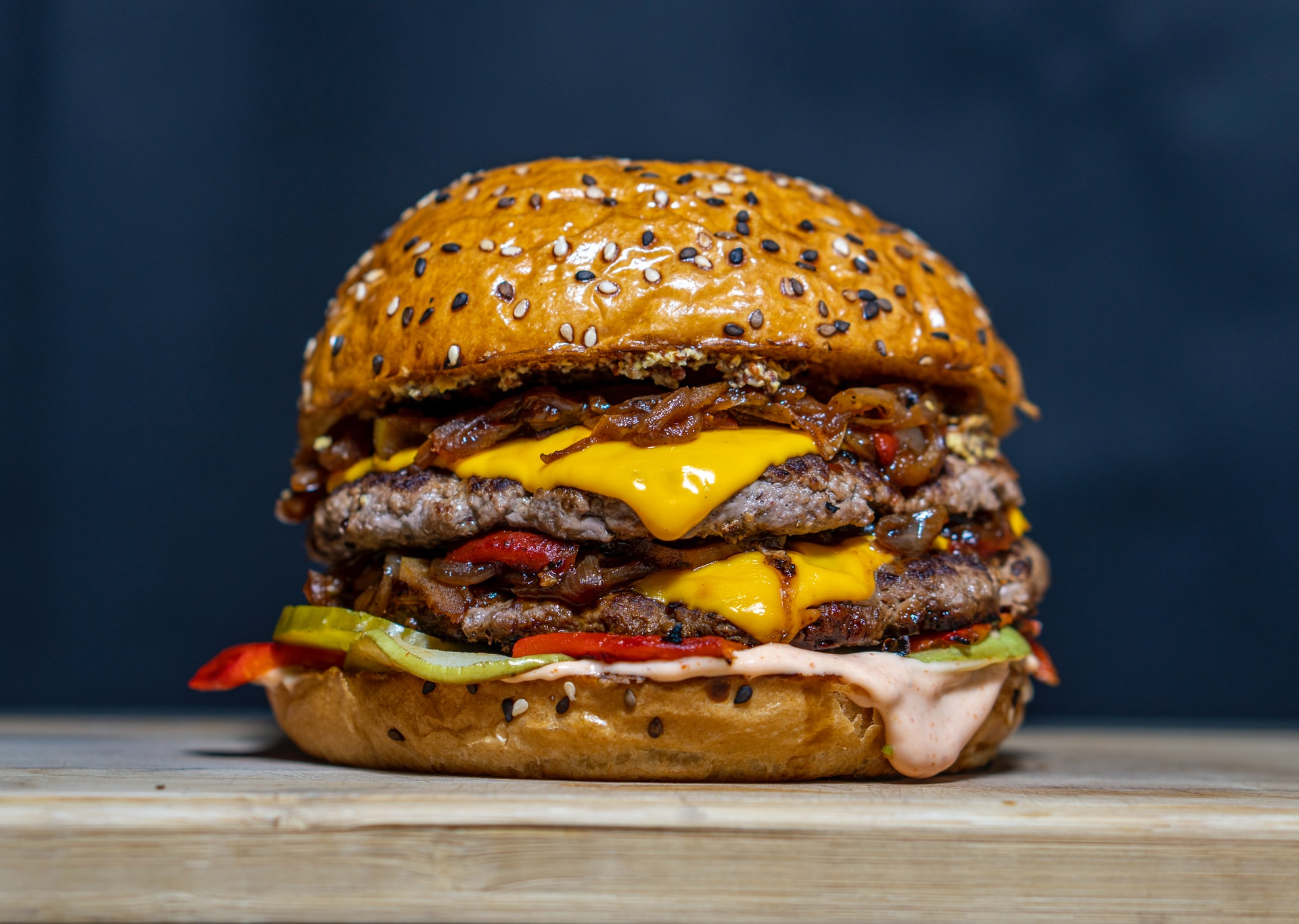Industrial production of meat from intensive farming is increasingly unsustainable, and faces heavy criticism for the conditions in which animals are raised and slaughtered, for the amount of water, energy, feed and other resources required to produce every single protein, and for the ever decreasing nutrient density of the final product, especially when compared with the food our grandparents ate. However, according to the most recent report from RethinkX, something could change very soon.
The disruption of protein as we know it
The industrial farming system, thanks to which today we enjoy supermarket shelves brimming with different choices – either real or assumed to be – has, in the last few decades, helped many parts of the population out of hunger, providing levels of health and longevity that had never been reached before. This system is now under pressure because of the health effects caused by chemical substances and pesticides, because of climate change and the emissions the system produces, and because many companies’ profit margins are cut to a minimum. However, in the wider world of food production, and especially in the protein sector, a series of technology-based shifts are taking place that could change food as we know it in just a few decades.
This is the core thesis of the recent report Rethinking Food & Agriculture 2020-2030: The second domestication of plants and animals, the disruption of the cow and the collapse of the industrial livestock industry. Published by US think-tank RethinkX, the report shows how the current food and farming system will be upturned by the rapid advancements that are being made in the realm of precision biology. The new production model will bring profound changes, not only to the agricultural system, but also to the economy, to society, and the environment more generally.
“The report is about the disruption of protein as we know it, driven by economics. Current food production is environmentally, socially, and economically unsustainable, so even a technology that’s not fully developed will be able to achieve higher margins compared to the current system” states on of the authors, Catherine Tubb. “By 2025, this technology will be able to compete for cost-wise with bulk proteins. And all that time cost is going to continue to improve and ultimately we see proteins as being five times cheaper by 2030 than existing animal proteins”.
Designing food with precision fermentation
Precision fermentation – a combination of biology and fermentation processes – starts with a microorganism that is fed primarily using sugars, food waste and agricultural waste. It is thus “programmed” so it can transform into any kind of more complex organic molecule, which in the case at hand would be the desired proteins. The cost of a laboratory-fed molecule using precision fermentation has fallen from 1,000,000$/kg in 200 to 100$/kg today and is projected to fall below $10$/kg by 2025. This radical lowering of costs has led researchers to state that precision fermentation is close to competing with industrial farming as a food production model, in terms of cost, speed, and volume.
Today, in the case of beef farming, the entire animal is fed for two or three years before the different cuts of meat can be used. Precision fermentation, on the other hand, starts from basic components, designing individual molecules that form more complexly structured products over several weeks. These could be cheese or yogurt, for example, but there is potential to create new products with different qualities and characteristics.
Food-as-software, introduced by the report, would thus be the future: modern food and molecules are designed and developed in the same way as apps. Anyone anywhere would have access to the tools for designing food: they would be available through molecular and nutritional databases, with either open-source or pay-per-use options. This would allow for the creation of new foods, but also cosmetics, medicines and materials and other materials that can be downloaded and created in fermentation farms. These structures, akin perhaps to microbreweries, could be built near cities and towns across the globe.
With things as they stand, US demand for beef products and the number of animals needed would fall by 70 and 50% respectively by 2030. Meanwhile, the new forms of protein production (lab-grown or through precision biology) would gain 75% of the market currently based on beef proteins. This would have similar consequences in other livestock sectors, and a series of repercussions on all industries linked to farming – fertilizers, machinery, veterinary services, and more. Greenhouse gas emissions linked to beef farming, for their part, would fall by 45% over the next ten years. By 2030, half of the 1.2 million jobs in the US linked with the production of beef meat and cows’ milk, and with related sectors, would be lost. Simultaneously, however, the emergent precision fermentation industry would create 700,000 jobs over the next 10 years, increasing to one million by 2035.
Milk, leather, collagen
It’s not just steak that is at risk of disruption, but products such as milk, leather, and collagen. Milk is 88% water: understanding and recreating the 12% that makes it milk, and especially the 3.3% composed of protein, would allow it to be produced without relying on cows.
The creation of human collagen, on the other hand, is already underway. In March 2019, Geltor announced the production of HumaColl21, the first animal-free collagen to be used in cosmetics, chosen for its bio-compatibility with human skin cells.
Even the materials sector could take advantage of this technology, forcing bovine leather –widely used in the fashion and interior design sectors – into retirement. For example, Japanese company Spiber produces spider’s silk thanks to a precision fermentation method that programmes a bacterium to make it produce synthetic silk. The Moon Parka, produced and designed by Spiber in collaboration with The North Face, was the first product on the market made using this material.
An agricultural and commercial revolution
Faced with this prospect, it seems possible that slowly, sector by sector (yhe report mainly discusses the beef sector as it is considered to be the least efficient, but similar considerations apply to the pork, sheep, and fishing industries), the farming industry could be brought to its knees. One of the effects of this would be a 40-80% decline in the value of farmland, 60% of which might not be used to produce food by 2035. This could be an opportunity for rewilding, with land returned to nature and used for CO2 compensation. If this were to happen, 500 million acres (200 million hectares) in the US alone could be assigned to new uses.
Even if this happened only partially, what political and economic impacts would such a scenario have? Decentralized and capillary modes of production would change trade relations between countries. Food production would be much less constrained by geographic and climate conditions. Exporters of animal products – like the USA, Brazil and the EU – would lose geopolitical leverage on countries that today depend on these imports in some way. Without the need for large swathes of arable land or particular natural resources to produce food, any country could take advantage of the technology, creating proteins at a much lower cost than currently possible. Developing countries with a growing population would have access to economically viable, protein-rich foods.
The transition in production from farmland to stainless steel fermentation tanks – that facilitate various types of biochemical reactions like aeration and closed-system temperature regulation – would have significant logistical repercussions. There would also be a decrease in production waste, from reductions in transport, water use, and greenhouse gas emissions.
Beyond Meat
Whether this all comes to pass in a nearer or more distant future, technological changes to protein production have already been happening for some years. And they’re impossible to ignore. Suffice it to say that Beyond Meat (the makers of the plant-based Beyond Burger) was listed on the Stock Exchange in 2019 and over the first few months its value rose to 10 billion dollars. And it’s not alone. While Beyond Meat uses software to decode the taste and nutritional profiles of protein-rich foods, designing new and cheaper alternatives, there are other companies that are taking advantage of bacterial or precision production to create protein, such as Impossible Foods, Perfect Day, and Novonutrient. Memphis Meats, on the other hand, is experimenting with the development of stem cells in animal tissues. The production of lab-grown fish and seafood is being worked on by Wild Type, BlueNalu and Finless Foods. Clara Foods creates eggs and egg whites using precision fermentation, which are then deployed as part of oven-bake products and ingredients for drinks and supplements.
The societal implications of “grown” meat
Laboratory-made proteins open up a wide range of debates. First of all, it must be decided whether they can be considered food in the same way as what we currently eat. Additionally, there are doubts about the nutrients present in foods made like this, on the repercussions they could have on hormones and human health. In some cases, these are the same doubts that are raised by the industrial and intensive farming model raises against the desirable idea of “good, clean, and fair” food.
Attention has to be paid to the repercussions on our daily lives. If it’s true that anywhere that there’s a building with access to water and solar power it will be possible to create proteins, what will be the implications for food supply to cities? Ownership and control of this new market will have to be closely monitored. As Tubb herself admits: “There are going to be key choices to be made to ensure transparency and achieve a distribution model that avoids an oligopoly-type structure like the current one”. How can it be avoided that the property of proteins ends up concentrated in the hands of four companies, as it is today? Will it be best to avoid the creation of patents, or to create anti-trust legislation? The role of governments will be crucial.
The societal implications also need to be taken into account. Inequality could potentially arise between those who consume lab-grown protein and those who can afford more expensive and nutritious meat created using regenerative agriculture methods.
Whether “grown” meat ends up on our plates tomorrow or not, we cannot passively wait for technology to save us. This is especially true at a time when many health, social, and environmental problems have their roots in a food industry that’s already unsustainable. Even so, grown proteins had already been thought up a long time ago, if in 1931 Winston Churchill stated in The Strand Magazine: “We shall escape the absurdity of growing a whole chicken in order to eat the breast or wing, by growing these parts separately under a suitable medium”.



